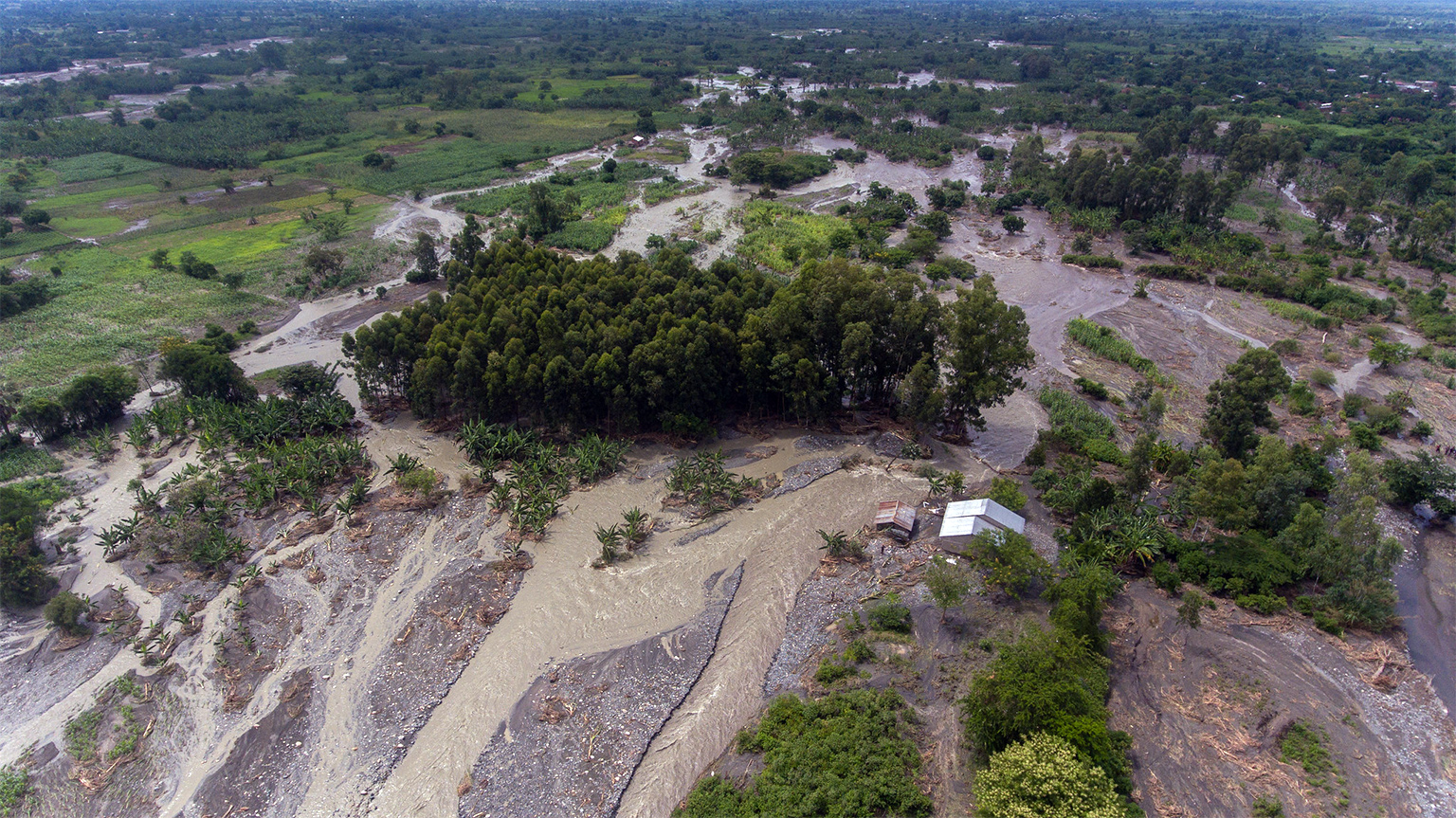Physical Address
Plot 123 Kampala, Uganda


By Ecomedia Editoria
As the Nyamwamba River emerges from the lush foothills of the Rwenzori Mountains and winds its way onto the savanna of western Uganda, it encounters an unsettling sight. On the far bank, past the scattered remnants of sun-bleached stones on the now-dry riverbed, towering walls of a copper tailings pool stand stark and exposed. These monumental structures are a haunting reminder of an industrial past that left an enduring mark on the landscape and the environment.
The tailings pools in question were constructed to contain the waste from a copper mining operation once run by Falconbridge, a Canadian company that dominated the region’s economy from the 1950s until the late 1970s. During its peak, Falconbridge’s copper mine in Kilembe was a vital economic engine, providing employment to over 6,000 people and accounting for nearly a third of Uganda’s GDP. However, the company’s departure in 1977, following the nationalization of the mine by Idi Amin, left behind a legacy of environmental damage that continues to affect the region.
The copper tailings pools, essentially large pits filled with mining waste, have become a source of severe environmental degradation. The pollutants within these pools, including heavy metals, are leaching into the Nyamwamba River, compromising water quality and posing health risks to local communities. The contamination disrupts agriculture and drinking water supplies, compounding the challenges faced by the residents.
Moreover, the impact of these pollutants is exacerbated by climate change. As global temperatures rise and weather patterns become increasingly unpredictable, western Uganda is experiencing more frequent and severe weather events, including prolonged droughts and intense rainfall. These changes further stress the region’s already fragile ecosystems and amplify the risks associated with historical pollution.
To address the environmental legacy of the Kilembe mine, there is an urgent need for climate action and environmental restoration. Efforts are underway to clean up and rehabilitate the tailings pools to reduce their impact on the environment. These restoration projects aim to neutralize pollutants and restore the land, but they require significant support and funding to be successful.
In addition to cleanup efforts, there is a broader need for proactive climate strategies that tackle both historical pollution and current environmental challenges. This includes implementing stricter environmental regulations for mining activities and promoting sustainable practices to prevent future contamination.
Despite the daunting challenges, local communities in Kilembe and surrounding areas are demonstrating remarkable resilience. Awareness campaigns about the environmental and health impacts of mining waste are gaining momentum, and local leaders and environmental activists are pushing for stronger policies and international support to address these issues.
The story of Kilembe’s copper tailings pools is a poignant reminder of the long-lasting effects of industrial activities on the environment. Yet, it also represents a call to action for healing the land and securing a sustainable future. As the Nyamwamba River continues its journey through the savanna, it symbolizes both the scars of history and the hope for renewal—a testament to the urgent need for comprehensive climate action and environmental stewardship.
The path forward requires acknowledging past mistakes, investing in sustainable solutions, and ensuring that the legacy of the Kilembe mine serves as a catalyst for positive change.